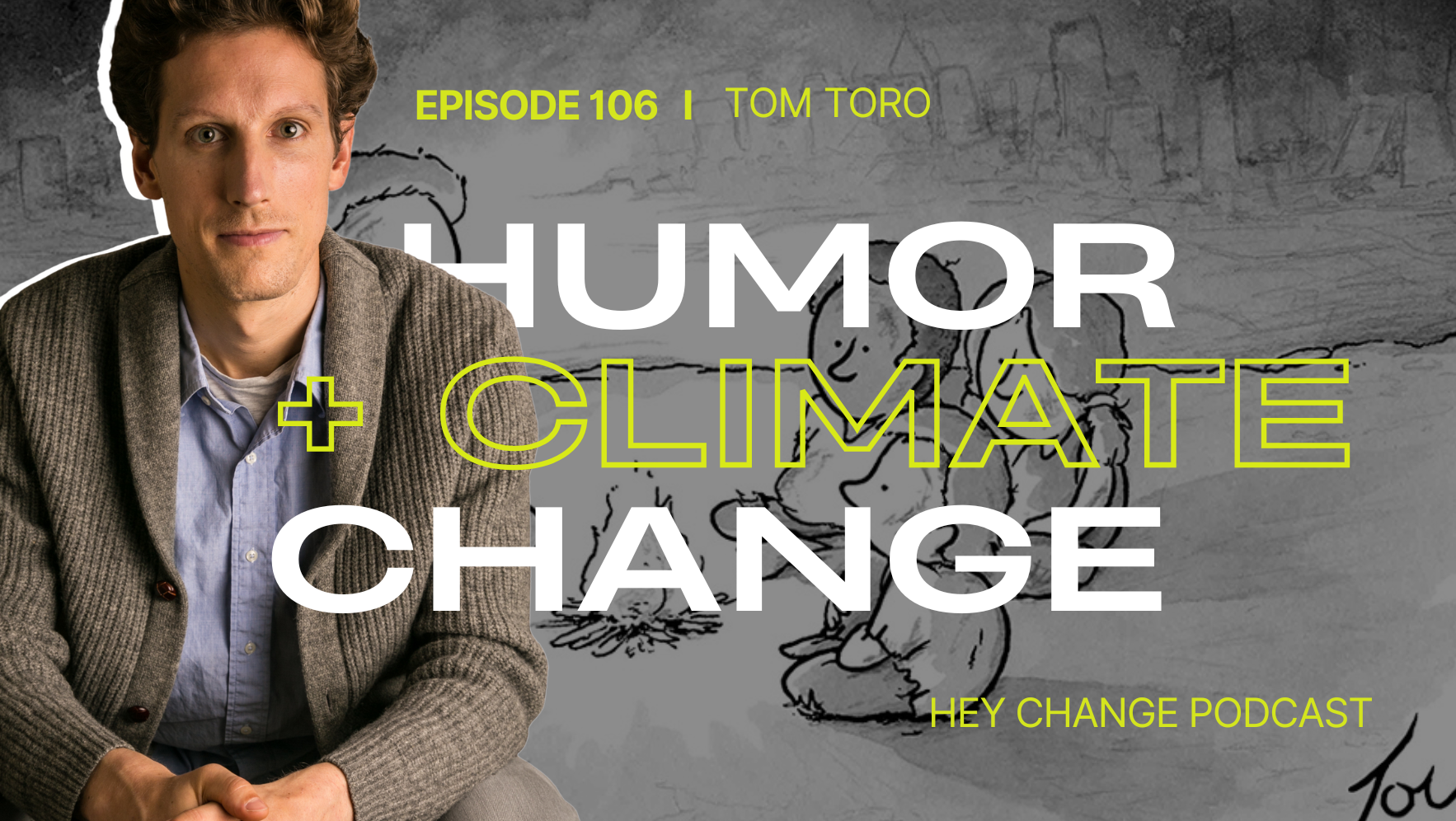106. How New Yorker Cartoonist Tom Toro Uses Humor to Talk About Climate Change
Is it OK to laugh about serious issues?
If so, what role does humor play in our important work for climate justice? Let’s talk about it! Today I’m joined by Tom Toro — a celebrated cartoonist whose work has appeared over 200 times in The New Yorker and who is best known for the now-iconic climate cartoon that says, ‘Yes, the planet got destroyed, but for a beautiful moment in time we created a lot of value for shareholders.’
You may have seen it.
The famous cartoon!
In our conversation, we learn about the iconic climate change cartoon that got a life on its own, became meme-fied, and ended up on signs and posters the world over. You might be surprised to hear that it was one of those cartoons that weren’t planned…
Known for balancing sharp observational humor with a playful, even compassionate edge, Toro also serves as chair of the Northwest Chapter of the National Cartoonist Society, and his cartoons have been a regular feature of The New Yorker since 2010.
In this conversation, Tom and I talk about the power of humor to help us process hard truths, how art can spark change, and why joy and creativity are essential tools for facing the climate crisis and other societal issues. If you’ve ever wondered how a single image can capture an entire movement — this episode is for you. Let’s dive in.
“It’s almost like a miracle that my most famous cartoon even exists — it was created faster than anything else I’ve ever done.”
Key Takeaways:
Humor as a Climate Tool: Cartoons can distill complex, overwhelming issues like climate change into bite-sized, memorable moments that invite reflection without paralyzing people.
Joy as Resistance: Maintaining joy is key to sustaining climate activism — revolutions that succeed are often joyful, not despair-driven.
The Viral Cartoon Story: Tom’s most famous climate cartoon was created spontaneously, in a rush, and became an iconic piece of climate communication.
Truth is Non-Negotiable: Good humor — especially on climate — must be factually and emotionally true to resonate and to withstand scrutiny.
The Artist’s Role: Artists are tasked with imagining the unimaginable and helping society visualize possible futures, good and bad.
Creativity Needs Space: Tom emphasizes the importance of boredom and quiet time to allow creative connections to form.
Optimism as a Practice: Both Tom and Anne Therese see hope as an active choice — one that keeps them engaged rather than nihilistic.
Follow + Support
Tom on Instagram: @tbtoro
Toms’ website: https://tomtoro.com/
Subscribe to Undiscovered Masterpieces on Substack


